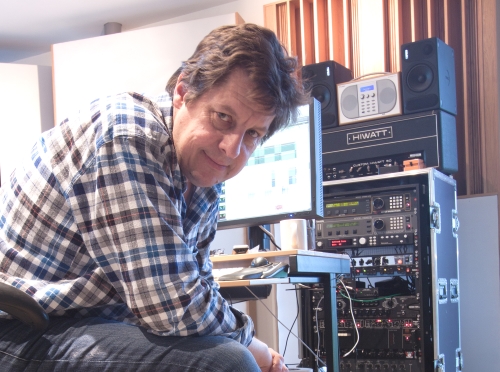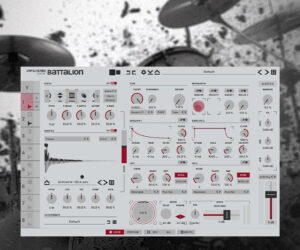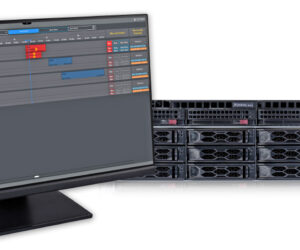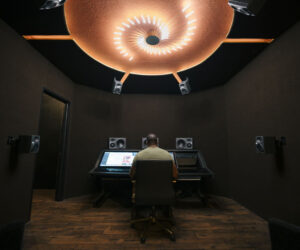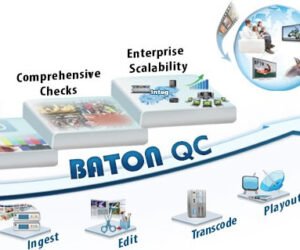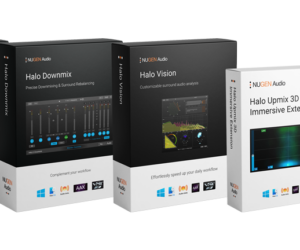Mix engineer Cenzo Townshend has installed a pair of PMC twotwo.5 nearfield monitors in the mix room at Decoy Studios, the White Mark-designed facility he established in a converted barn in rural Suffolk.
Since moving out of London in 2013, Cenzo has rarely stopped working, mixing hit singles and/or albums for artists including Florence and the Machine, The Maccabees, Christine and the Queens, Franz Ferdinand & Sparks, George Ezra, Kaiser Chiefs, Maximo Park, Jake Bugg and James Blunt — the list comprising an anthology of recent modern popular music in all styles from You Me At Six to Sophie Ellis-Bextor.
Initially providing SSL-based mixing facilities for Cenzo to work in, Decoy Studios has expanded to additionally incorporate recording spaces based around an Audient Heritage Edition console, and a compact overdub/vocal chamber furnished in the style of an Edwardian gentleman’s library.
The expansion is paying off — four number one albums have been mixed at Decoy to date, and judging by the sheer amount of work from artists pouring in to the studios daily, they are unlikely to be the last.
The recording facilities at Decoy have also been much used in recent months due to their proximity to Framlingham, the home of Suffolk’s most famous recent export. Singer/songwriter Ed Sheeran recorded some of the tracks featured on his 2017 album ÷ at the studio, and his recent collaboration with James Blunt, the single ‘Make Me Better’ from Blunt’s new album The Afterlove, was also completely recorded (and mixed by Townshend) at Decoy.
Cenzo Townshend is renowned for not favoring a particular brand of monitors when mixing, and likes to essay work-in-progress on several permanently installed monitors in his mix room, including Yamaha’s classic NS10s and a Pure digital radio, which he employs to check radio mixes.
“I think the PMCs are wonderful and sound great,” he explains, taking a break from mixing a new Maximo Park single. “I love all my Listening to different sets helps me get a different perspective on things, quite literally — that’s why I like having to change my position to listen to the different monitors.”
However, that’s not to say that the PMCs are interchangeable tools in Cenzo’s mixing armory.
“I like the twotwos when I’m working on vocals,” he goes on. “They really open up the top end of vocals, specifically — if I’ve overdone something, if it’s a bit unnatural in the high frequencies, or a de-esser is grabbing, for example, they reveal that to me instantly — far better than my NS10s do.
“At the low end, I can work very quietly if I choose, but still hear the definition between the kick drum and the bass — and the PMCs will very quickly reveal to me if I’ve got phase problems between the two. The other week I was struggling with this very dense track, and wasn’t sure how best to proceed. I decided to play the mix-in-progress on the PMCs. Quite quickly, I was able to identify and make some small adjustments which opened everything up.”
Nor are the twotwos used solely for highly analytical purposes in the studio. “They’re also really pleasant to listen to,” admits Cenzo. “….and I also love my other loudspeakers. I like listening to music on them when I’m not mixing. I’ve had some raised eyebrows when people come in and see me listening to these compact PMCs either side of my digital radio, but I say ‘Well — just listen’. Then they all say, “Oh, I get it now.”
At the time of writing, Cenzo Townshend has just finished mixing albums for Stuart Price’s new protegés Face, George Ezra’s brother Ethan Barnett (who records as Ten Tonnes, and whose debut album was produced by Hugo White of Maccabees), Christine and the Queens, Justice, and The Sherlocks. His next projects are albums by Rat Boy, Everything Everything, and Magic Gang. Expect to see all of them at the top of a national chart near you before long.


